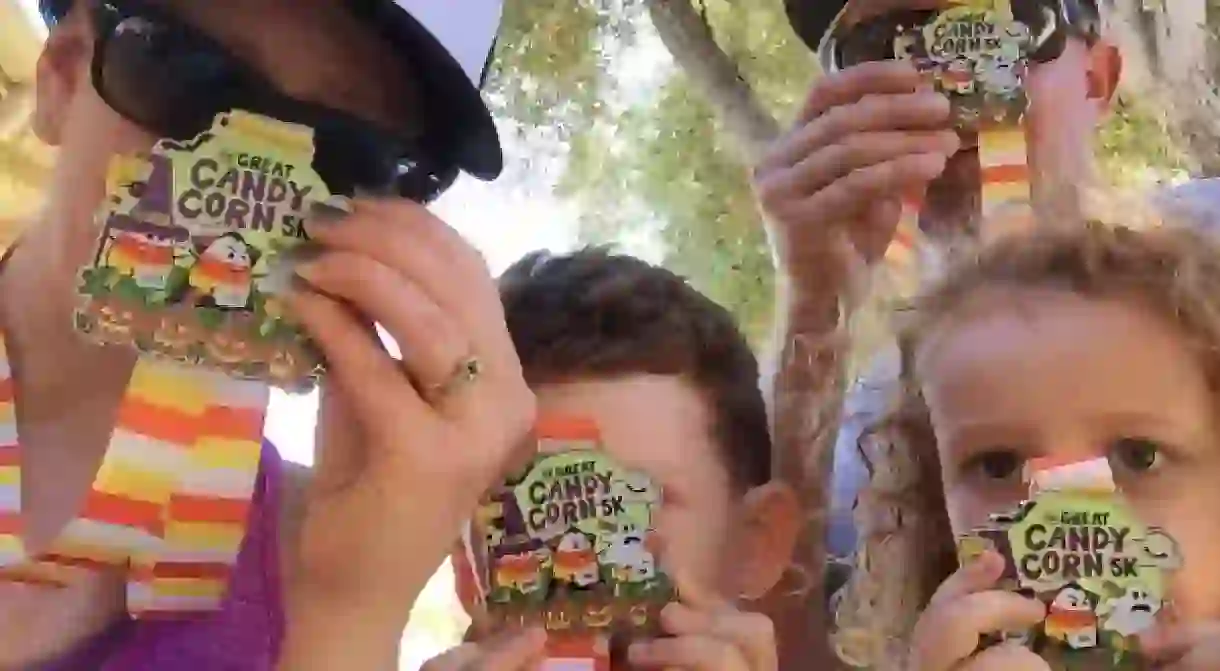The Psychological Benefits of Running a Virtual Race

We all know someone who is an avid runner. They’re the friend or family member who sticks to a strict diet, training regimen, and schedule in preparation for their next race. He or she might not go out Friday night so they can wake up at 6 a.m. Saturday for a 10-mile run before the rest of the world rises from their hangovers and ventures off to brunch.
Most people want to be healthier and running is one of the best exercises for you. The benefits are endless, but finding the motivation (and time) to devote to it may be easier said than done. That’s where virtual races come into play.
A virtual race is a run (or walk) of a predetermined distance that participants do on their own time and at their own pace. There isn’t the commitment of waking up early on a weekend, driving to a set location, and lining up with hundreds or thousands of other runners for a 5K or marathon. Virtual races aren’t intimidating; they’re light-hearted.
“It’s something a little different, something a little fun,” said Dr. Michael Sachs, a sports psychologist and professor in the Department of Kinesiology, College of Public Health at Temple University in Philadelphia. “If anything, it might get more people into running and at established races. You shouldn’t be embarrassed because it’s a virtual race.”
Gone For A Run is a company founded in 2010 that creates unique and thoughtful products that inspire people to run and celebrates those accomplishments. The Gone For A Run Virtual Race Series, which launched in 2015, offers opportunities to participate in virtual races, ranging from the “Run Now, Gobble Later 5K” Thanksgiving-themed race to “Kiss Me I’m a Runner 5K” around St. Patrick’s Day.
Interested participants register online for the race(s) of their choice, paying a fee ranging from $20-35. Portions of these registration fees are donated to accompanying charities, including St. Jude Children’s Hospital, Achilles International, Intrepid Fallen Heroes Fund, and Give Kids the World Village. After registering, participants are sent a race package, which includes a race bib, medal, and T-shirt or other race-themed paraphernalia. Runners complete the predetermined distance at their own pace and time (during a certain date range), upload their results, and of course, share photos wearing their swag and proudly holding their medals on social media.

“The social engagement our races offer along with the great race swag and charity component helps with the continued growth of the amazing community of runners,” Gone For A Run founder Julie Lynn said.
The Gone For A Run Virtual Race Series has had more than 40,000 participants, ranging from novices to experienced runners, from all across the United States and Canada. More than 1,000 runners participated in the recent “Run Now, Gobble Later 5K”, which concluded Dec. 1.
https://www.instagram.com/p/BbiqAXohNUW/?tagged=goneforarun
Sachs, an avid runner himself, having participated in two marathons, says offering medals, T-shirts, and paraphernalia to entice novice runners is a classic example of extrinsic motivation. Such physical rewards are more beneficial in that scenario, but eventually, runners earn enough swag and their motivation turns intrinsic—motivation to accomplish goals for oneself’s self esteem, confidence, and pride.
“If you have someone who doesn’t run or exercise regularly, the T-shirts, hats, gloves, and medals might be a motivating factor,” he said. “Hopefully after a while you aren’t running for the medal, and you’re doing it because you like to run. Maybe this gets them one step closer to doing an organized race or joining a running community.”













